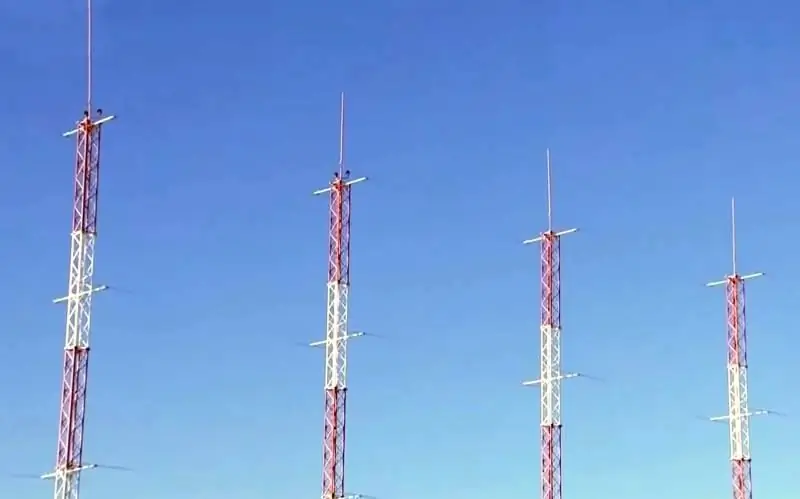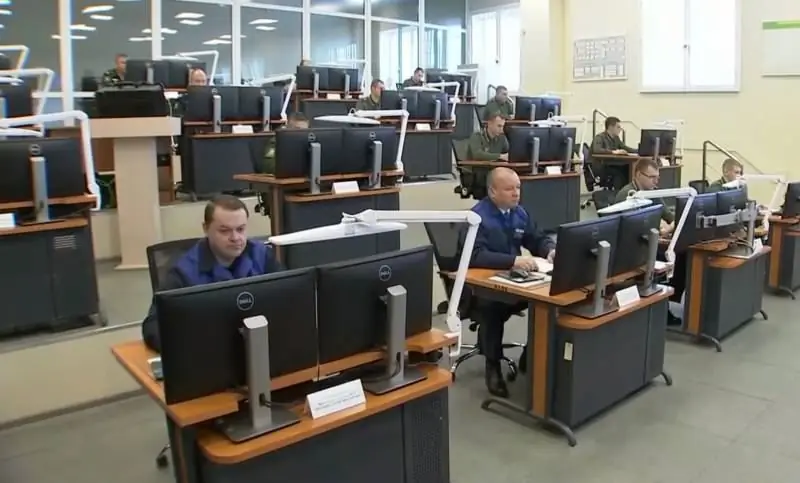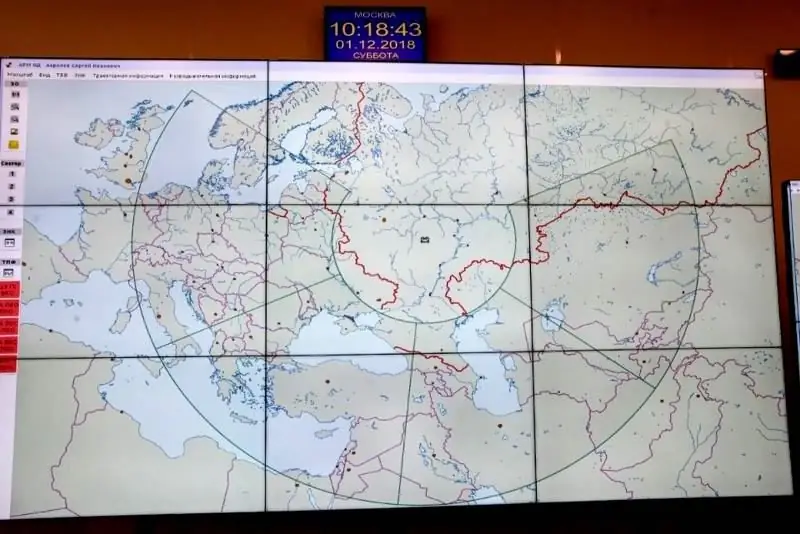- Author Matthew Elmers [email protected].
- Public 2023-12-16 21:49.
- Last modified 2025-01-24 09:17.

On December 1, the Ministry of Defense announced the transfer of the first radar station 29B6 "Container" to combat duty. This object is designed to monitor the air situation in the West direction and detect potentially dangerous targets. In the foreseeable future, it is planned to deploy several new "Containers" and expand the army's ability to monitor the situation around the borders.
Head piece
The radar "Container" was developed at the Scientific Research Institute of Long-Range Radio Communication (NIIDAR, Moscow) by order of the Ministry of Defense. Major work on the construction of the head station of the series was completed in the recent past. The station funds were deployed in the Nizhny Novgorod region and in Mordovia.

A year ago, the first station 29B6 took over on experimental combat duty. Until recently, various tests and refinements of the radar were carried out. Now all the necessary measures have been completed, thanks to which the station was able to take up full-fledged combat duty.

Now it is a full-fledged element of the overall air monitoring system and significantly expands the detection area of all main targets. The whole of Europe and some other regions are under the control of the first "Container".
Technical features
The high performance of the 29B6 radar is provided by a special design. The station includes two antenna fields for transmitting and receiving signals, separated by 300 km. According to known data, the transmitting part of the "Container" is deployed near the town of Gorodets (Nizhny Novgorod region), and the receiving antennas are operating near the town of Kovylkino (Mordovia).
The transmitting antenna of the complex is made in the form of a field with 36 masts and has a length of 440 m. The receiving part includes three straight sections of 34 m high masts, deployed in the form of a triangle. The length of the receiving antenna field is 1300 m. The hardware part of the radar complex is mounted in transportable containers and is located in the immediate vicinity of the antennas.
According to known data, the "Container" is a two-coordinate over-the-horizon radar using the decimeter range. The station is capable of detecting air targets at ranges up to 3000 km and altitudes up to 100 km. The minimum detection range due to the over-the-horizon principle of operation is 900 km. Tracking was originally carried out in a 180 ° wide sector; later it was increased to 240 °. The equipment of the complex provides automatic tracking of at least 500 objects of all basic types.

A single target of the "airplane" type in the continuous control zone is detected for 0-350 seconds. For group targets, the detection time does not exceed 12-15 minutes from the moment of takeoff.
NIIDAR speaks about the possibility of detecting strategic and tactical aircraft, incl. stealth, cruise and ballistic missiles, hypersonic aircraft, etc. The characteristic features are used to determine the class and type of target. The calculation of routes is automatically carried out with the issuance of data to other air defense systems.
The objectives of the complex
The task of the radar "Container" is to detect and identify potentially dangerous aerodynamic targets in the over-the-horizon zone. Detection and escort lines move beyond the state border, which gives obvious advantages.
Radar 29B6 should work in the same control loops with other means of detecting air and missile defense. With its help, it is possible to identify the enemy's attack in the shortest possible time, which leaves enough time to repel it. In fact, potentially dangerous objects are detected long before they turn into a real threat, and by this time the air defense receives all the necessary data to defeat them.
The prototype 29B6 is deployed in the central part of Russia; its position was chosen taking into account the "dead zone" of 900 km. From the chosen position, the complex is able to monitor the situation in the airspace of the countries of Eastern and Central Europe, Scandinavia and even the Middle East.

In fact, the first "Container" station successfully covers the entire western direction and effectively supplements the already deployed observation systems of other types with lower characteristics.
The development organization claims that the 29B6 radar is capable of detecting all possible aerodynamic targets. Taking into account modern trends in the development of aviation and rocket technology, special attention is paid to the possibility of detecting stealth aircraft and hypersonic aircraft. The possibilities for detecting simpler targets, built without the use of advanced technologies, are obvious.
Continuous radar field
Construction and putting on alert the head radar 29B6 "Container" is the first step in the next improvement of the domestic air defense and missile defense system. To date, a continuous radar field has been created along the borders of Russia, providing monitoring of the situation and identifying dangerous objects. In the future, "Containers" will provide an expansion of the capabilities of such a system.
According to current plans, in the foreseeable future, three more over-the-horizon 29B6 radars will be built and put on duty in different regions of Russia. The Nizhny Novgorod-Mordovian complex follows the western direction, while three other stations will be responsible for the Arctic, East and South.
A few years ago, it became known about the construction of the second "Container" in the Far East. Obviously, this product will track flights over the Pacific Ocean and the countries of the Asia-Pacific region. In the near future, construction should be completed, after which the radar will be put on experimental combat duty.

The next radar station may appear in the Arctic direction. Now NIIDAR is engaged in relevant issues. The construction of the Arctic station may begin in the coming years. Probably, for operation in the harsh northern conditions, the original project needs some kind of revision.
Air defense and missile defense
As a result of the construction and launch of four 29B6 "Container" radars, our country will receive new opportunities. "Traditional" radar stations with limited detection range will be supplemented with new over-the-horizon systems. Thanks to this, the detection zone will significantly expand deeper into the border regions.
It is worth recalling that at present, construction is underway on new over-the-horizon missile attack warning radars with a detection range of thousands of kilometers. The zone of responsibility of the stations of the Voronezh family overlaps significantly with the zone of detection of the planned "Containers", which gives well-known advantages.
New opportunities for the armed forces will be the result of two current programs for the construction of radars for different purposes. Around the country's borders, a continuous radar field will be created to detect aerodynamic and ballistic targets. All deployed assets will ensure the country's security "on long-range approaches."
However, it should be borne in mind that the program for the construction of new radars of two classes has not yet been completed. The construction of several stations of the early warning missile systems of the Voronezh family continues, and the same is happening within the framework of the Container project. The two types of stations will be able to provide a complete and continuous field around the borders only for the foreseeable future. The joint work of air defense and missile defense stations has so far been ensured only in the Western direction.
However, all such plans will be implemented within a reasonable time frame, and the armed forces will receive the required samples with special capabilities. Several stations of the Voronezh family will in the near future reach deployment on alert, and at the same time the construction of the next "Containers" will be carried out. The result of all these works will be the formation of an expanded radar field and a corresponding increase in the country's defense capability.






